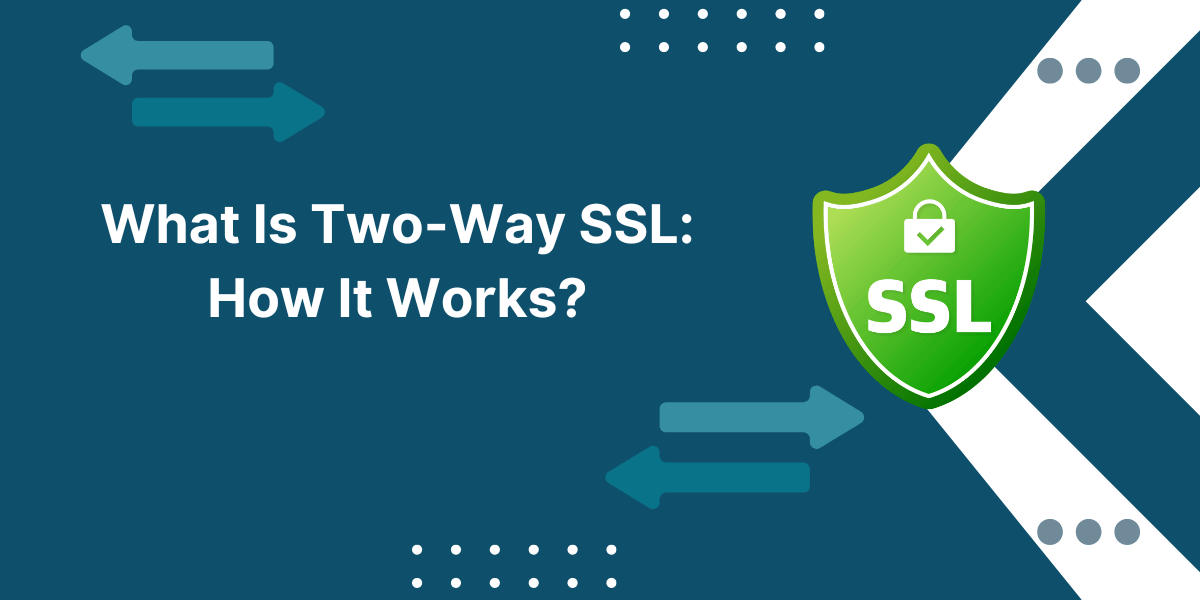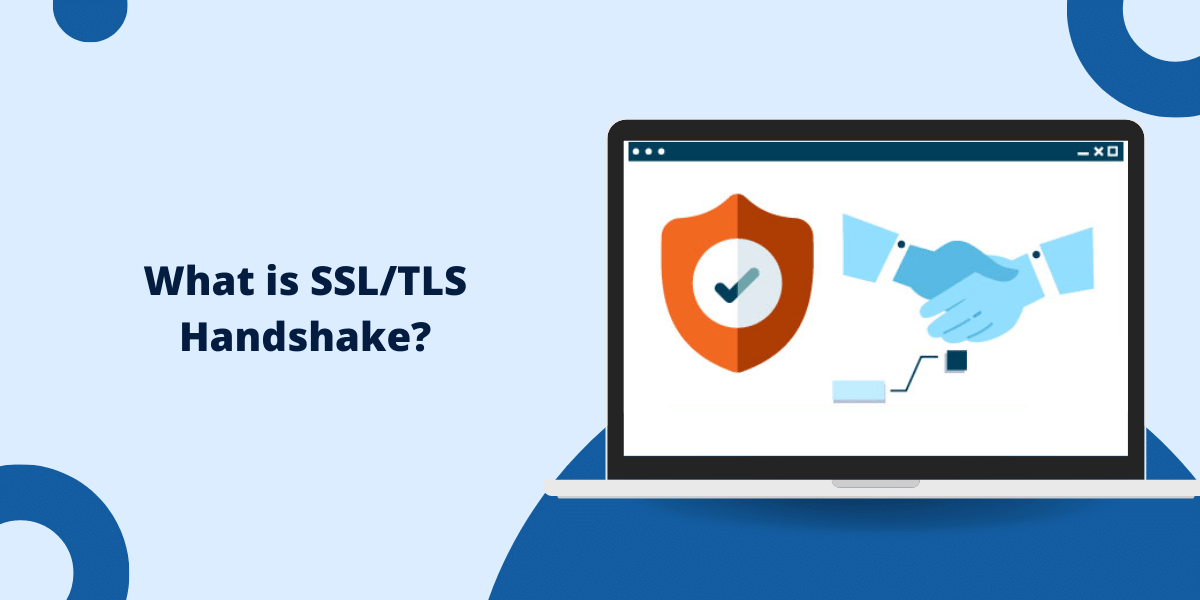Getting Started with 2 Way SSL
2 Way SSL (also known as mutual authentication or client-side authentication) is a system that enables both the client and server to authenticate each other through verifying the digital certificates during an SSL handshake. It provides an extra layer of security compared to regular SSL encryption where only the server is authenticated.
Two-way SSL prevents man-in-the-middle attacks and confirms the identity of both parties involved in the communication. It is commonly used in highly security-sensitive environments like online banking, payment gateways, VPNs etc. to prevent unauthorized access.
Key Takeaways
- Two-way SSL enables mutual authentication – both client and server verify each other’s identity using digital certificates.
- It prevents man-in-the-middle attacks by requiring the client to present a valid certificate signed by a trusted Certificate Authority.
- Two-way SSL is also referred to as mutual authentication or client-side authentication.
- It provides better security than regular one-way SSL where only the server is authenticated.
- Commonly used in highly security-sensitive environments like banking, payment gateways, VPNs etc.
How Does Regular One-way SSL Work?
Before looking at two-way SSL, it’s important to understand how regular SSL works.
In regular SSL, when a client browser tries to connect to a web server over HTTPS, the server presents its SSL certificate to the client. This certificate is signed by a trusted Certificate Authority like Comodo, Symantec, GoDaddy etc.
The client verifies this certificate against the pre-installed list of trusted CAs to authenticate the identity of the server. If the certificate is valid, the session can proceed.
So, in regular SSL, only the server is authenticated while the client remains unidentified. The SSL session is encrypted to prevent man-in-the-middle attacks where someone tries to eavesdrop on the communication.
However, a malicious client can still connect to the server posing as a legitimate client if there is no second layer of authentication.
What is Two-way SSL and How Does it Work?
Two-way SSL provides an additional layer of security by requiring the client to present its own certificate to the server, in addition to the server presenting its certificate.
Both parties must authenticate each other before the SSL session can be established. This prevents malicious clients from connecting to the server posing as a legitimate client.
The 2 Way SSL Handshake Process
Here are the steps involved in a 2 Way SSL handshake:
- Client hello: The client sends a “client hello” message to the server indicating it wants to establish an SSL session.
- Server hello + certificate: The server responds with a “server hello” message and presents its SSL certificate to the client.
- Client verifies server certificate: The client authenticates the server by verifying the server certificate against trusted CAs.
- Server request client certificate: If the server certificate is valid, the server requests the client to present its own certificate to authenticate itself.
- Client sends certificate: Client presents its SSL certificate to the server.
- Server verifies client certificate: Server verifies if the client certificate is signed by a trusted CA to authenticate the client.
- SSL session established: If both certificates are valid, the SSL/TLS handshake is completed, and an encrypted session is established.
Why is Two-way SSL Used?
Two-way SSL prevents man-in-the-middle attacks and makes it very difficult for malicious users to access sensitive servers posing as a legitimate client.
Here are some common use cases where two-way SSL is implemented:
- Banking and financial applications: Banks implement two-way SSL on their internet banking and mobile apps. This prevents cybercriminals from accessing accounts by posing as legitimate customers.
- VPN access: Corporate VPN servers require client certificates on top of server certificates to prevent unauthorized devices from accessing the corporate network.
- Payment gateways: Payment gateways use two-way SSL to authenticate customers and prevent fraudulent transactions.
- Cloud applications: SaaS applications that deal with sensitive data often require two-way SSL authentication for enhanced security.
- IoT device authentication: Two-way SSL can be implemented for authentication between IoT devices and servers.
- PKI-based authentication: The client certificates used in two-way SSL are part of Public Key Infrastructure (PKI) that provides robust authentication.
Difference Between One-way SSL and Two-way SSL
Here is a quick comparison between one-way SSL and two-way SSL:
|
One-way SSL |
Two-way SSL |
|
Only server is authenticated using SSL certificate |
Both server and client are authenticated using SSL certificates |
|
Vulnerable to man-in-the-middle attacks |
Resistant to man-in-the-middle attacks due to mutual authentication |
|
Malicious clients can connect posing as legitimate clients |
Malicious clients cannot connect as they lack valid client certificate |
|
Client remains anonymous |
Client is identified via client certificate |
|
Easy to implement |
Complex PKI infrastructure required to issue and manage client certificates |
|
Used for general web traffic |
Used in highly security-sensitive applications like banking, VPN etc. |
How to Implement Two-way SSL
Here are the high-level steps to implement two-way SSL:
Obtain Server Certificate
- The server has to obtain an SSL certificate from a trusted CA like Comodo, Symantec, GoDaddy etc.
- The certificate should be installed on the server and the private key should be kept securely.
Enable Client Authentication On Server
- The server has to be configured to request & validate client certificates. This is usually done through the server SSL settings.
- The Certificate Authority (CA) certificates have to be installed on the server to authenticate client certificates.
Issue Client Certificates
- A client certificate has to be issued to each client user/device that needs access to the server.
- The client certificate should be signed using the CA certificate which is trusted by the server.
- The certificate should be securely installed on the client machines/devices.
Client Presents Certificate During SSL Handshake
- The client will present this installed certificate to the server when the server requests client authentication.
- The client’s private key is used to digitally sign data during the SSL handshake to prove it owns the certificate.
And that’s it! With valid certificates on both sides, the two-way SSL handshake will be successfully completed.
What are the Challenges in Implementing 2 Way SSL
Though two-way SSL improves security, it also introduces some challenges:
- Infrastructure complexity: The PKI setup to issue and manage client certificates can be complex compared to plain SSL.
- Client compatibility: The client has to support certificate installation and selection during SSL handshake. Some clients may not support this.
- Certificate expiry and renewal: The validity period for client certificates is usually shorter than server certificates. Renewing certificates regularly adds overhead.
- Revocation issues: Revoking compromised certificates promptly is critical. This adds to the certificate management burden.
- User experience issues: Handling client certificates often requires some user interaction at the client-end which may impact user experience.
- Cost of certificates: Client certificates are required for each user/device which increases the operational costs.
- Key storage on clients: The client’s private key used for signing data in the SSL handshake has to be stored securely on each client machine. Proper access controls need to be implemented to prevent unauthorized access to the private keys. Compromise of the private key completely defeats the two-way SSL security.
Two-way SSL vs Other Mutual Authentication Methods
Two-way SSL is one of the strongest mutual authentication methods, but there are some alternatives:
- Username/password: Simplest method but weak security. Passwords can be stolen leading to impersonation.
- API keys: Harder to steal than passwords but still vulnerable. API keys can be accidentally exposed or stolen by malware.
- One-time passwords: More secure than static passwords. But OTP over SMS/email can be intercepted. Time-based OTP tokens are better.
- Cryptographic keys: Client and server exchange cryptographic keys for mutual authentication and encryption. Provides good security but complex key management.
- Biometrics: Using fingerprint, face recognition etc. for authentication. Convenient but not foolproof. Spoofing is possible.
Among these, two-way SSL provides the best balance of security, scalability and robustness leveraging PKI infrastructure. The client SSL certificate cannot be easily stolen or forged, providing reliable client authentication.
Conclusion on 2 Way SSL
Two-way SSL brings client authentication to the standard SSL protocol, preventing unauthorized access through forged client identities. It mutually authenticates and encrypts communication between clients and servers.
Though more complex to implement than regular SSL, 2 Way SSL provides robust defense against MITM attacks for security-sensitive applications like banking, VPNs and payment systems.
With proper planning and processes, the overhead of managing client certificates can be handled to benefit from the enhanced two-way authentication and access control provided by this system.
FAQs about 2 Way SSL
What is the difference between one-way SSL and two-way SSL?
One-way SSL authenticates only the server while two-way SSL provides mutual authentication of both client and server using SSL certificates.
Is two-way SSL more secure than one-way?
Yes, two-way SSL is more secure as it verifies the client’s identity in addition to the server’s identity using certificates issued from a trusted Certificate Authority.
What are the benefits of two-way SSL?
Main benefits are prevention of man-in-the-middle attacks, resisting impersonation attempts, confirming identities of both parties involved and restricting access only to authorized client systems/users.
What are some common use cases of two-way SSL?
Common use cases are banking and financial apps, VPN access, payment gateways, cloud applications handling sensitive data and authentication between IoT devices.
What infrastructure is required for implementing two-way SSL?
It requires setting up a Public Key Infrastructure (PKI) to issue, distribute, manage and track client certificates along with the server certificates. Proper access controls are also needed to secure private keys.
What challenges are faced in two-way SSL implementation?
Challenges include complexity of certificate management, ensuring client compatibility, handling certificate expiry/renewal, revocation of compromised certificates, cost of purchasing certificates and securely storing private keys on clients.
How does two-way SSL work with load balancers?
The load balancer has to be configured as a reverse proxy to pass client certificates to the back-end servers. End-to-end encryption has to be ensured between clients and back-end servers.
Can code signatures provide mutual authentication like two-way SSL?
Code signing only authenticates the source/developer of the code. It does not authenticate the client in real-time during a session like two-way SSL client certificates do.
Is two-way SSL supported across all browsers and devices?
All modern browsers and platforms support two-way SSL. But very old systems may have issues. So, client compatibility has to be tested before implementing two-way SSL.



